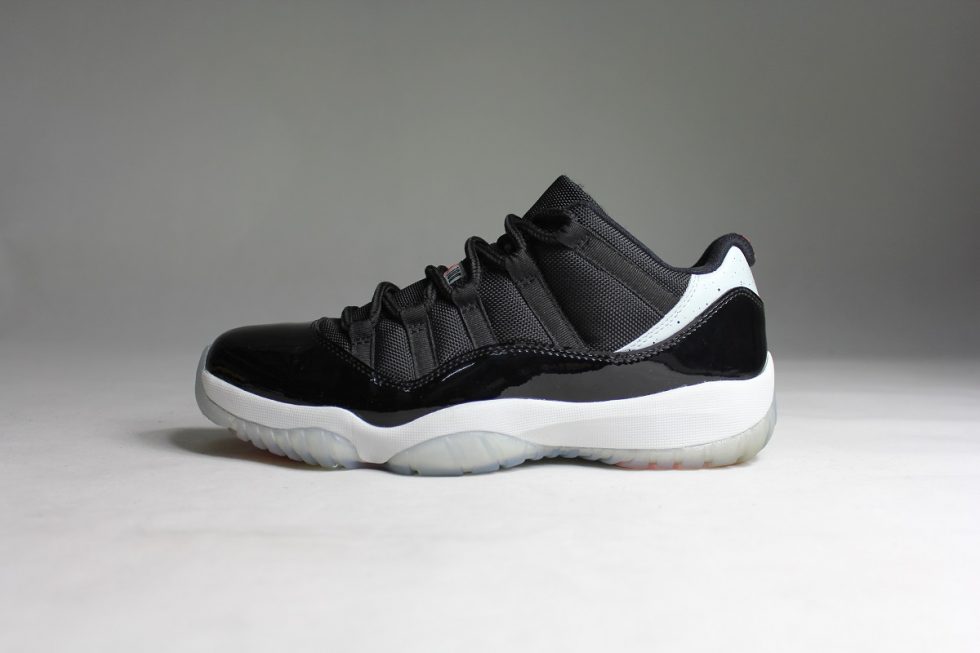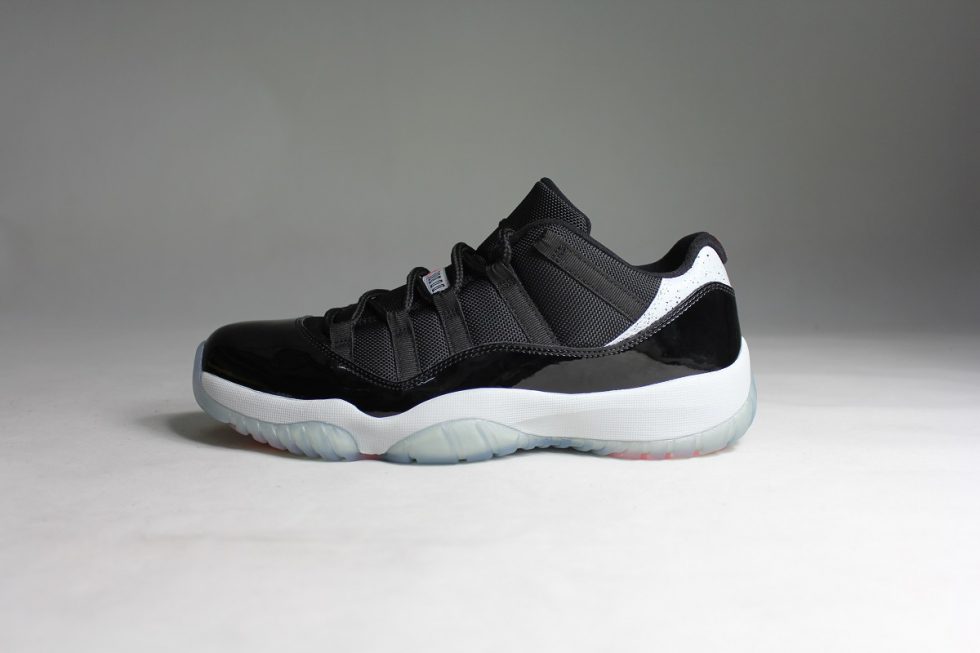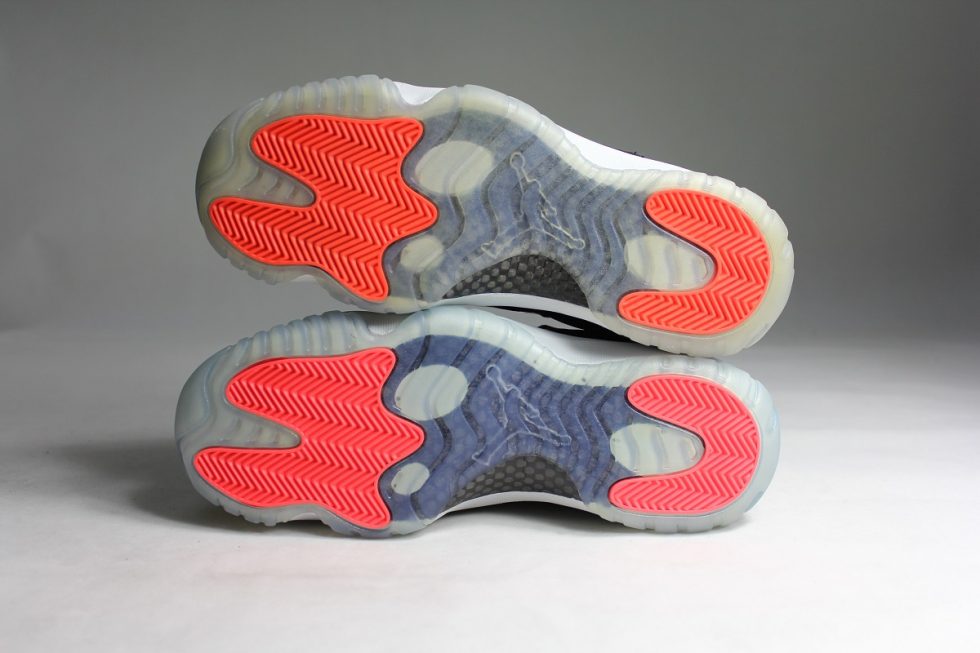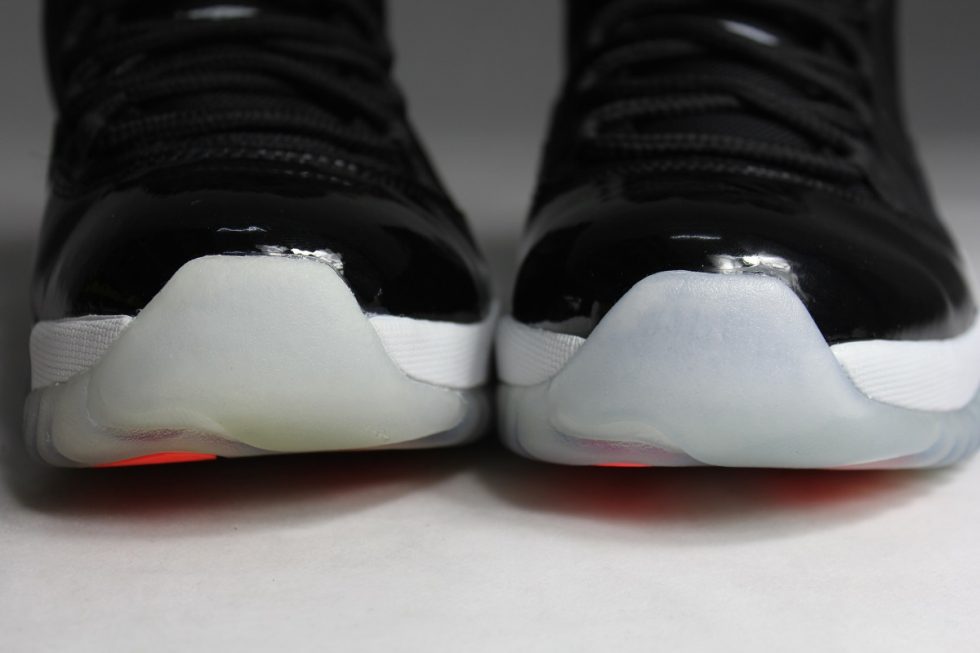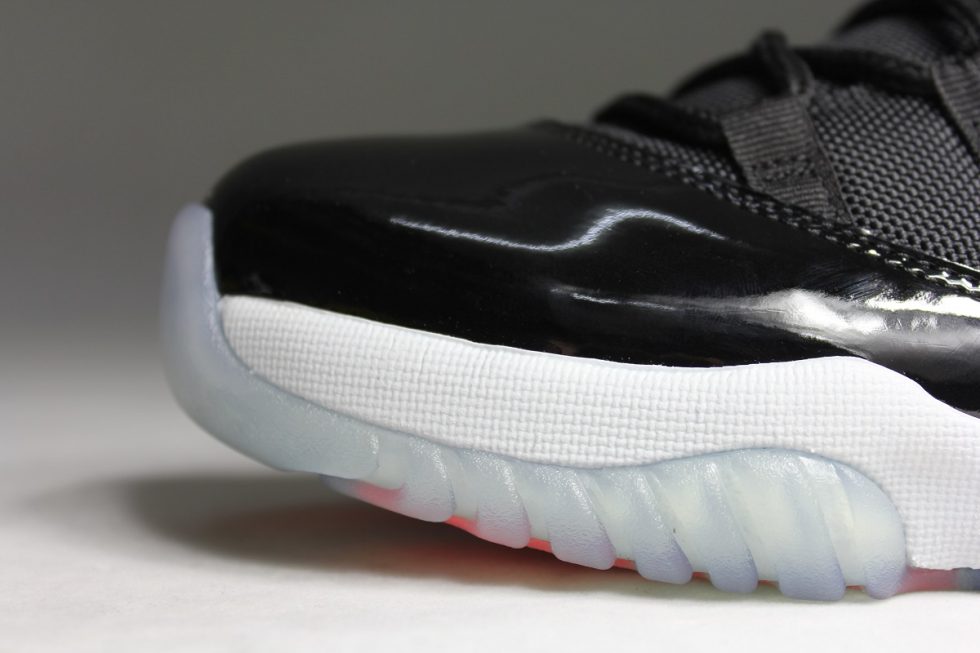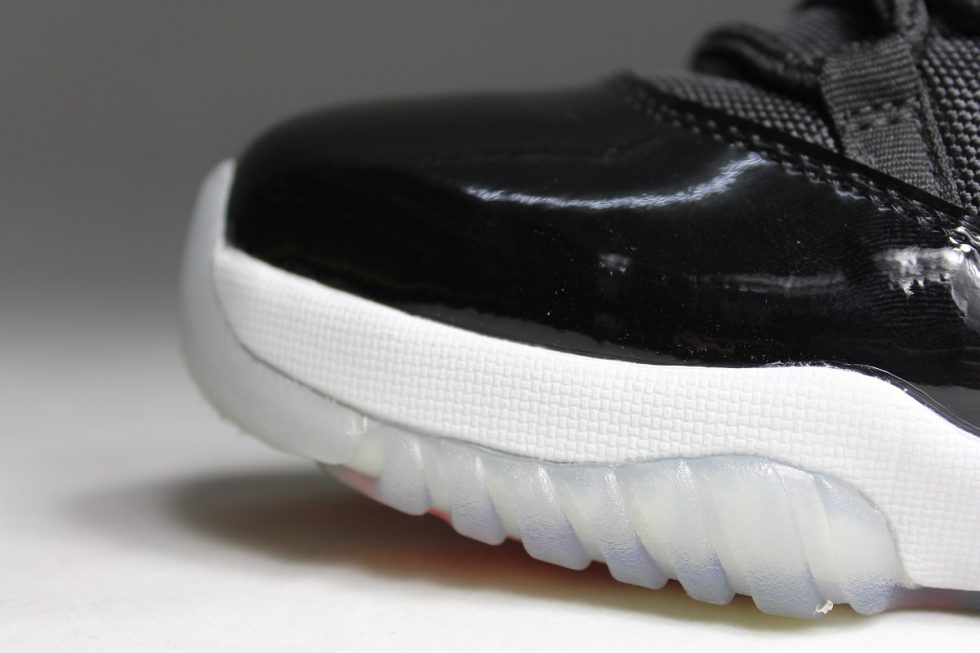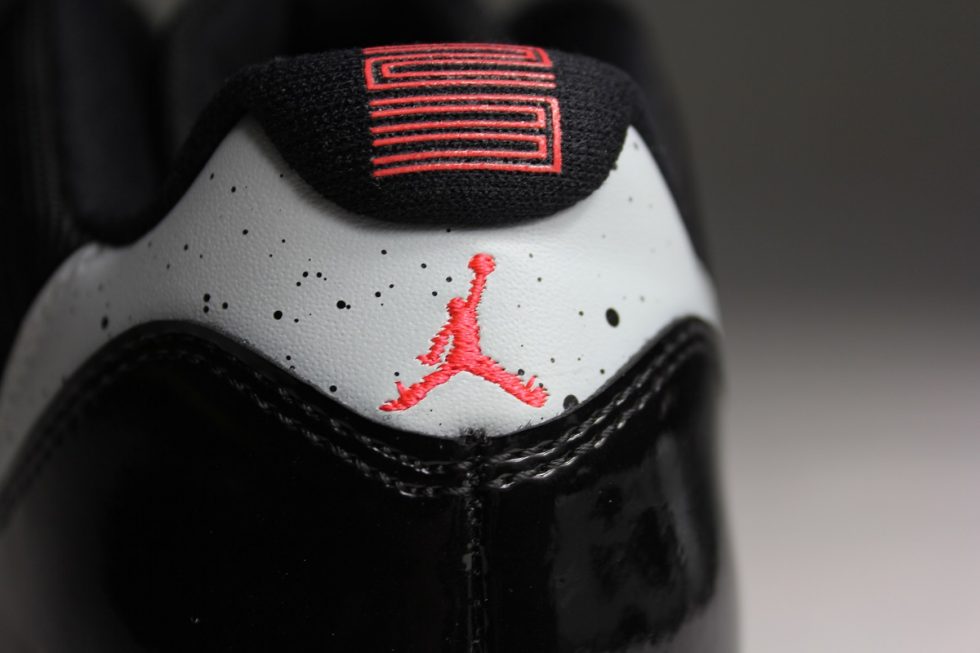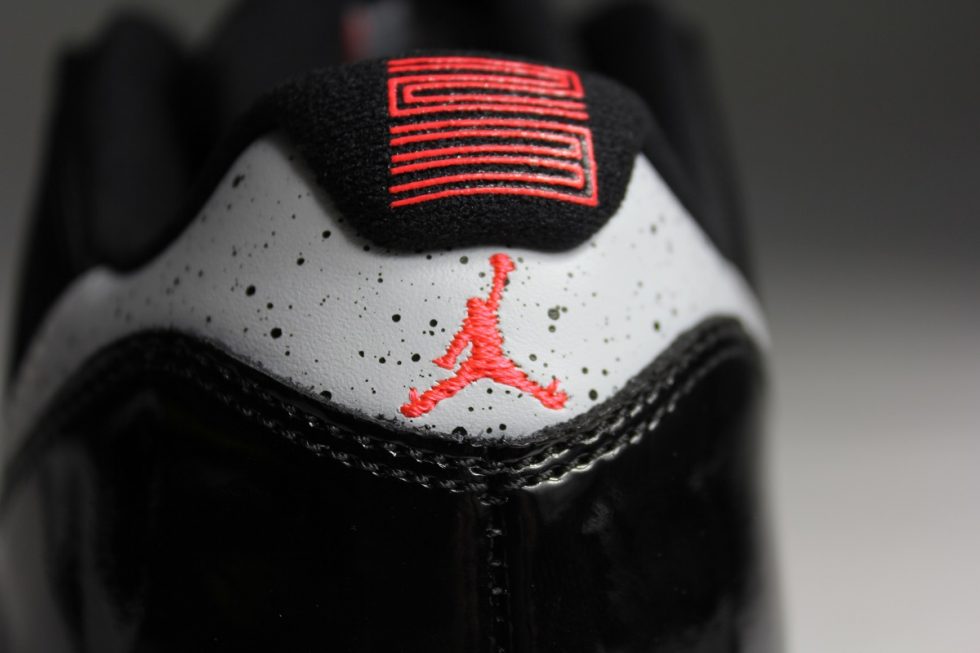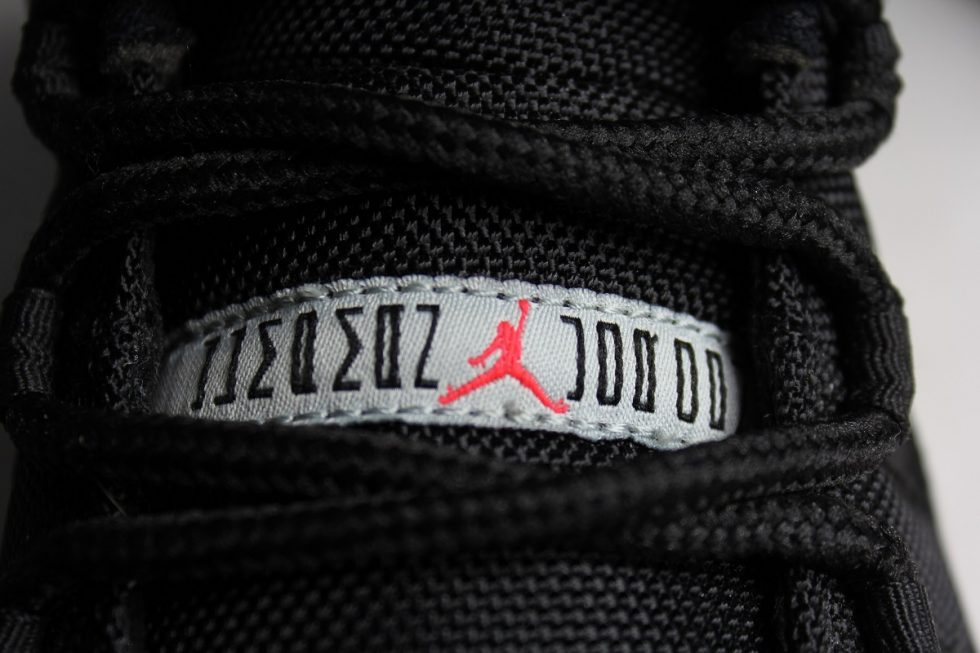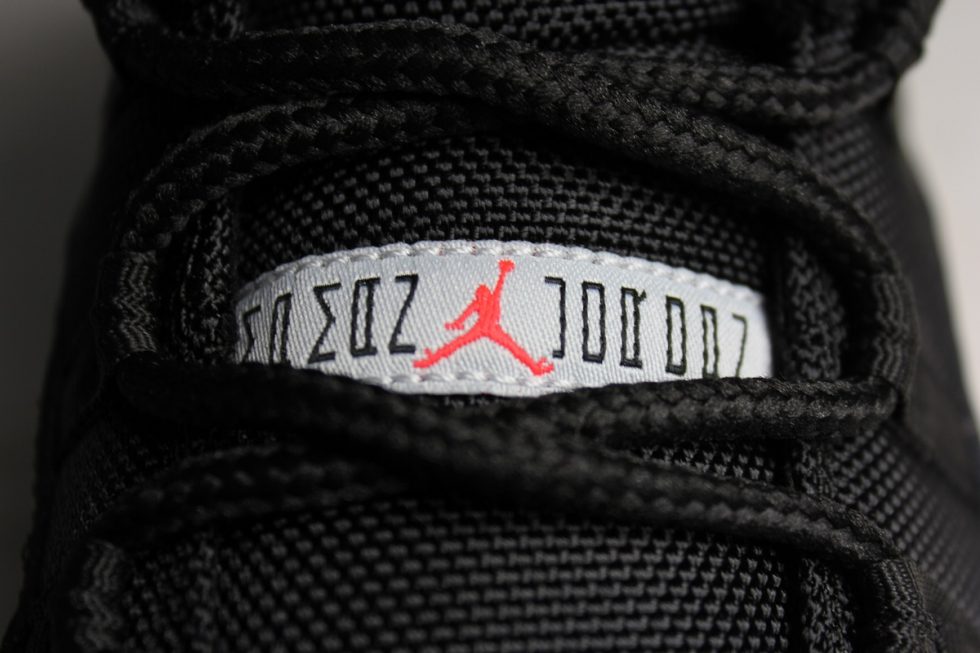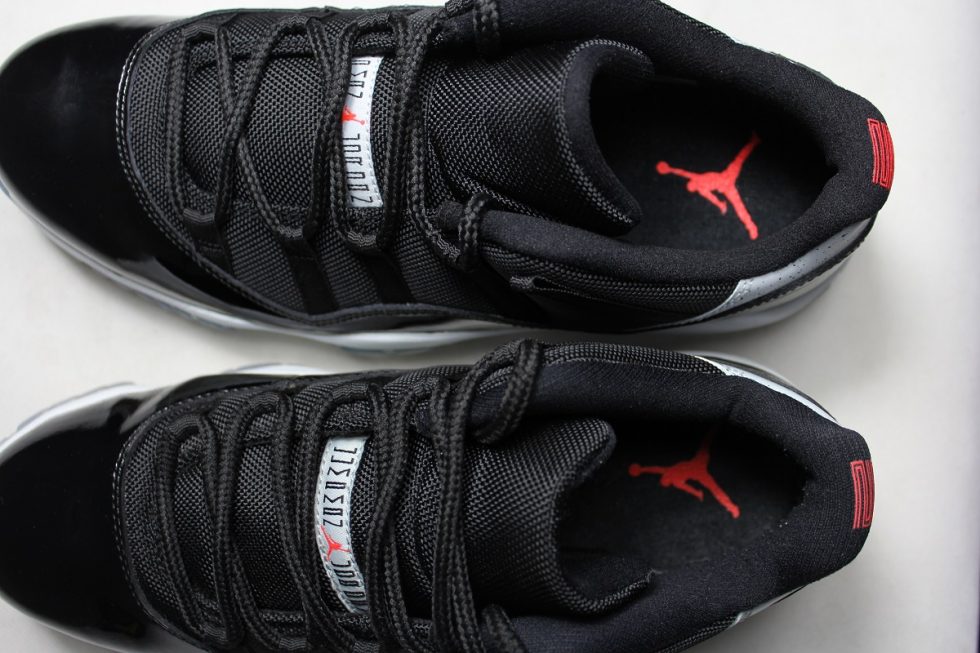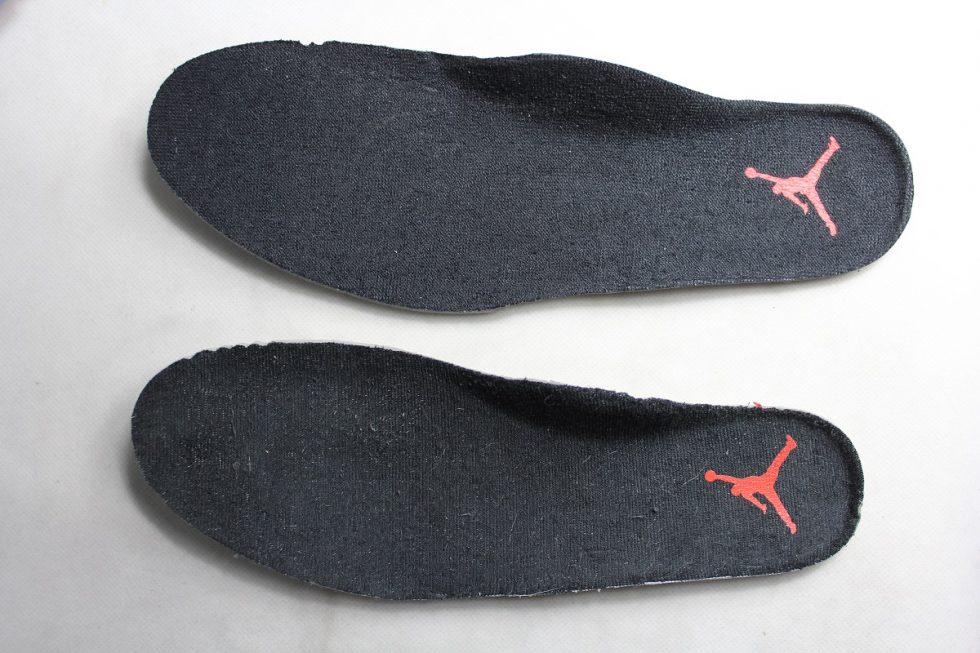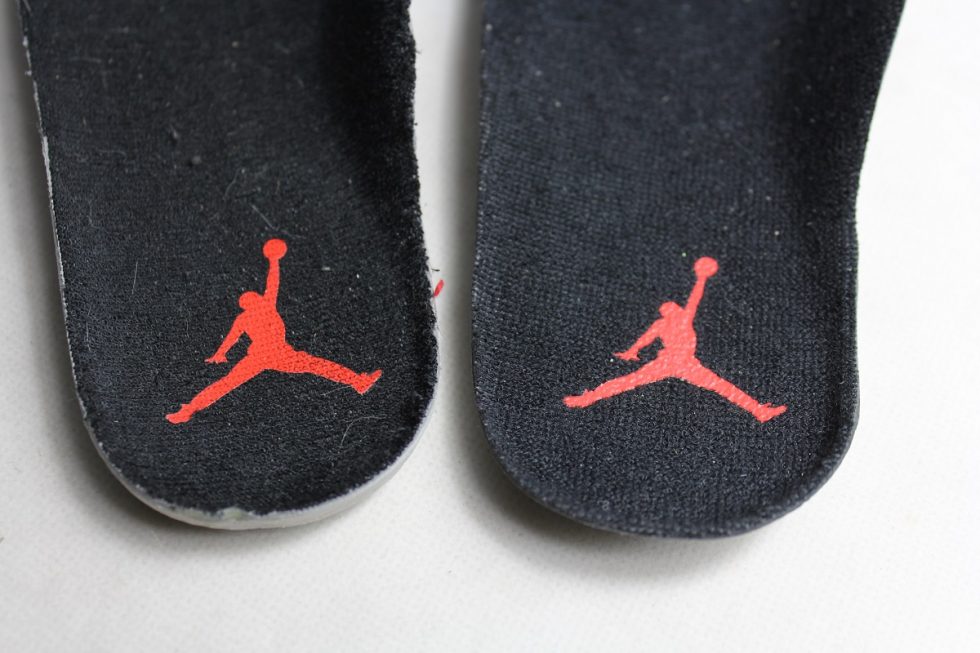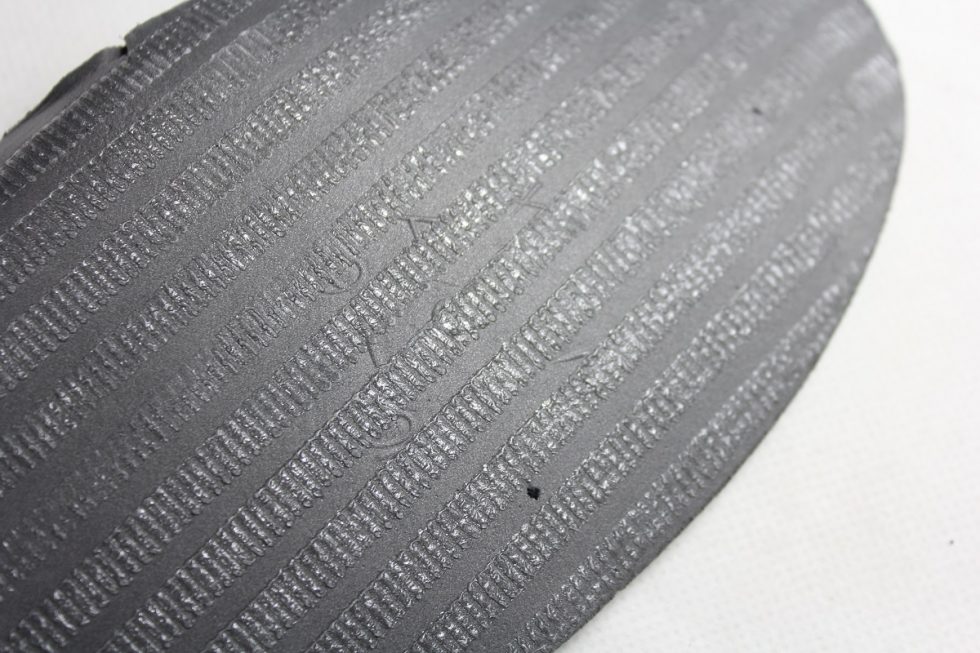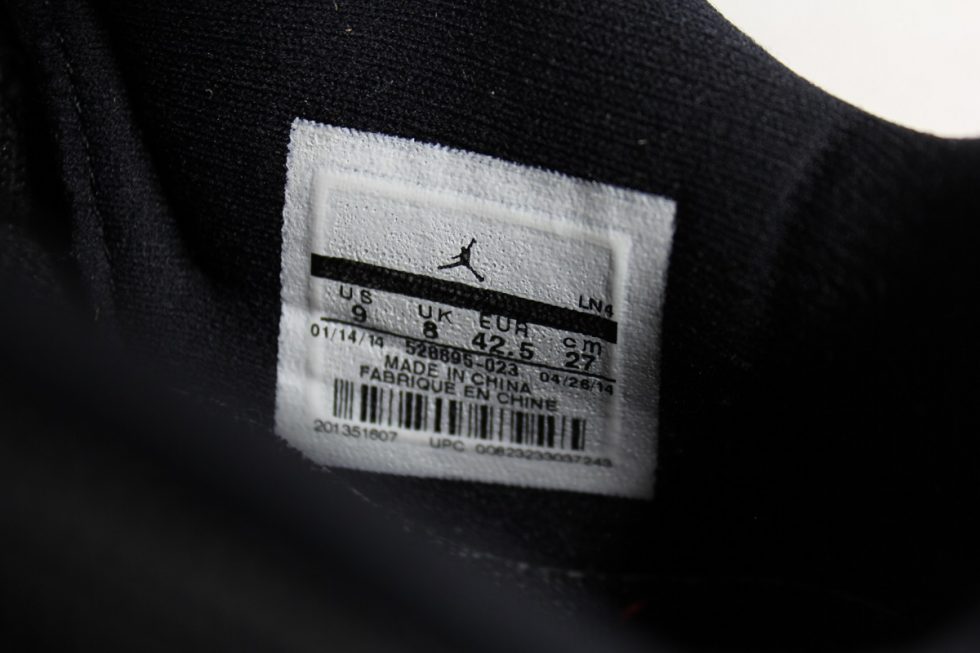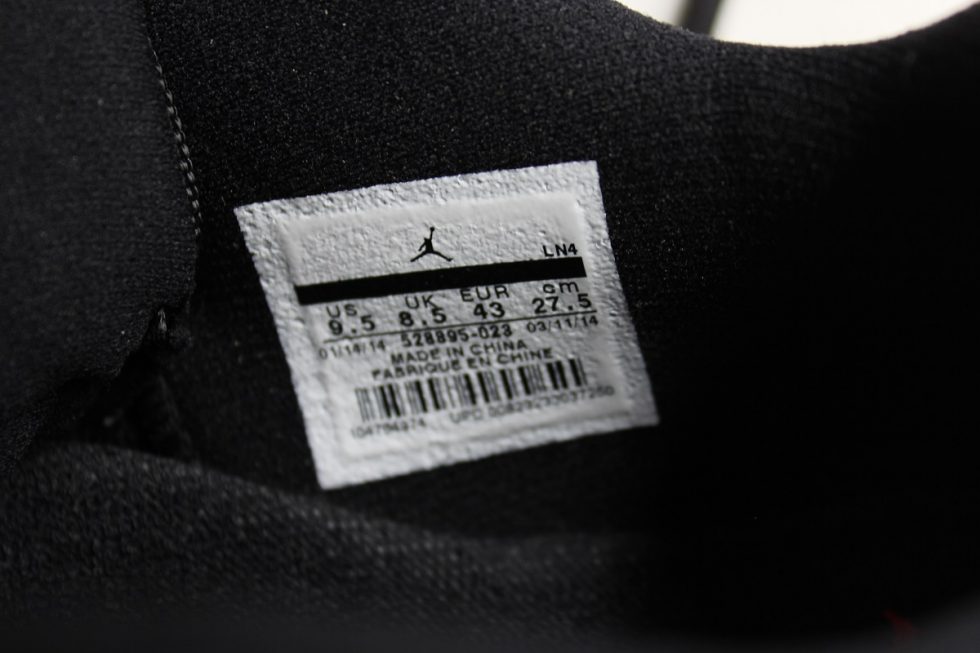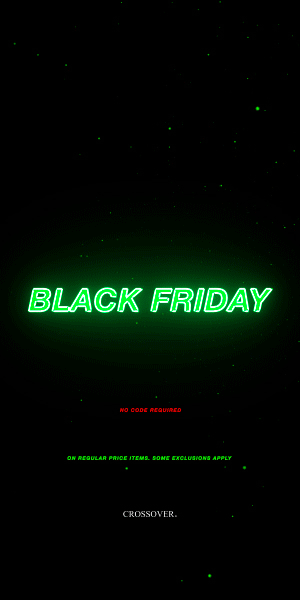I stumbled on this term while scrolling through the #KLKIX hashtag on Instagram when I found a picture of a pair of AJ11 that was coupled with the caption “Unauthorized Authentic”. I was so intrigued by the term that I screen-cap the picture, and posted it up on a popular Facebook group to ask about the member’s opinions. Some people say that it is over produced / leftover sneakers, some say that it’s a term for rejected pairs, but majority just wrote it off as a new term for fakes. Since then, there has been a lot of talk about the term “UNAUTHORIZED AUTHENTIC”, and about what the true meaning of the term really is in the sneaker world.
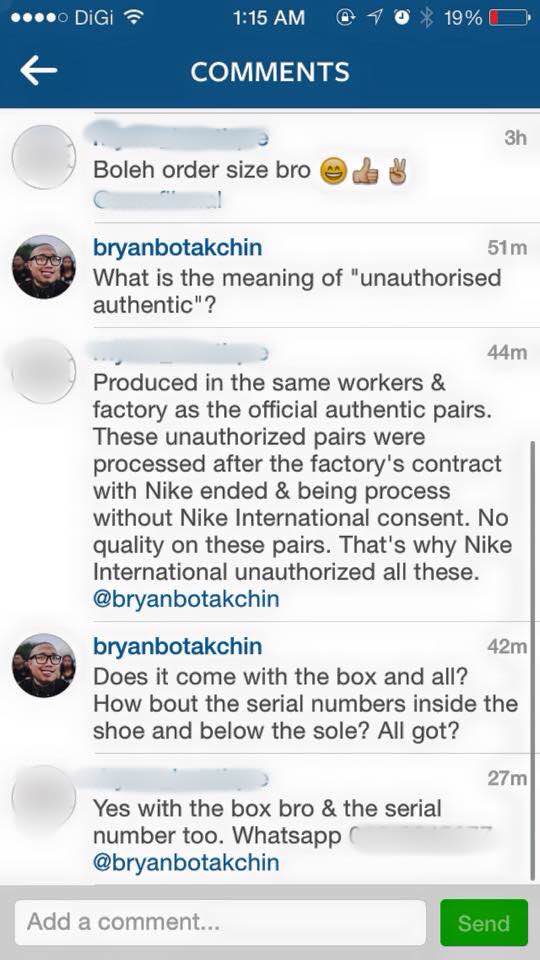
Extremely curious and intrigued, I whipped my phone out and started texting, emailing and calling some people who are key players in the sneaker scene, to ask them about this whole “Unauthorized Authentic” term. Some of them are notable sneakerheads in the scene, some are sneaker store owners, and some of them have sneaker manufacturing ties in China.
After gathering the info, below is basically what the real meaning of what the term “Unauthorized Authentic” really is, and how it came about:-
Major shoe companies do not stick to a set of factories to produce their shoes. They assign a certain number (i.e. 50,000) per model for each factory to produce. The thing about all this factories is that they do not produce just 50,000 pairs. They will produce 20,000 to 30,000 extra pairs, some even 50,000 pairs. Reason being is that they need this extra pairs to replace the rejected pairs after they fail to pass quality inspection. What happens after the shoe company receives their 50,000 pairs of shoes is that they move production to another factory to produce the same pair of shoe.
But what gets left behind in the old factory is the 20,000-30,000 pairs of shoe that were rejected, or did not even get to see QC because the shoe company has already reached their quota. So that is how the term “UNAUTHORIZED AUTHENTIC” came about. All this extra pairs that are left over, are produced at the same factory, by the same workers, with the same material, just that they did not get licensed/authorized/quality checked by the shoe company OR rejected by the shoe company for not meeting their standards. The factory will then sell this left over shoes to sneaker resellers, sneaker dealers, and online stores. And that is how the term “Unauthorized Authentic” gets thrown around so often in our scene.
So after gathering all this info, and finally getting a true picture of what the term really means, I was still pretty dissatisfied because I wanted to see for myself what a pair of “Unauthorized Authentic” really is. After a few phone calls, I managed to get a hold of an “Unauthorized Authentic” pair of AJ11 Retro Low “Infrared”. Below is the comparison between a brand new pair of Authentic pair of size US9.5 AJ11 Retro Low “Infrared” which was bought at HUNDRED% and a used size US9 “Unauthorized Authentic” pair.
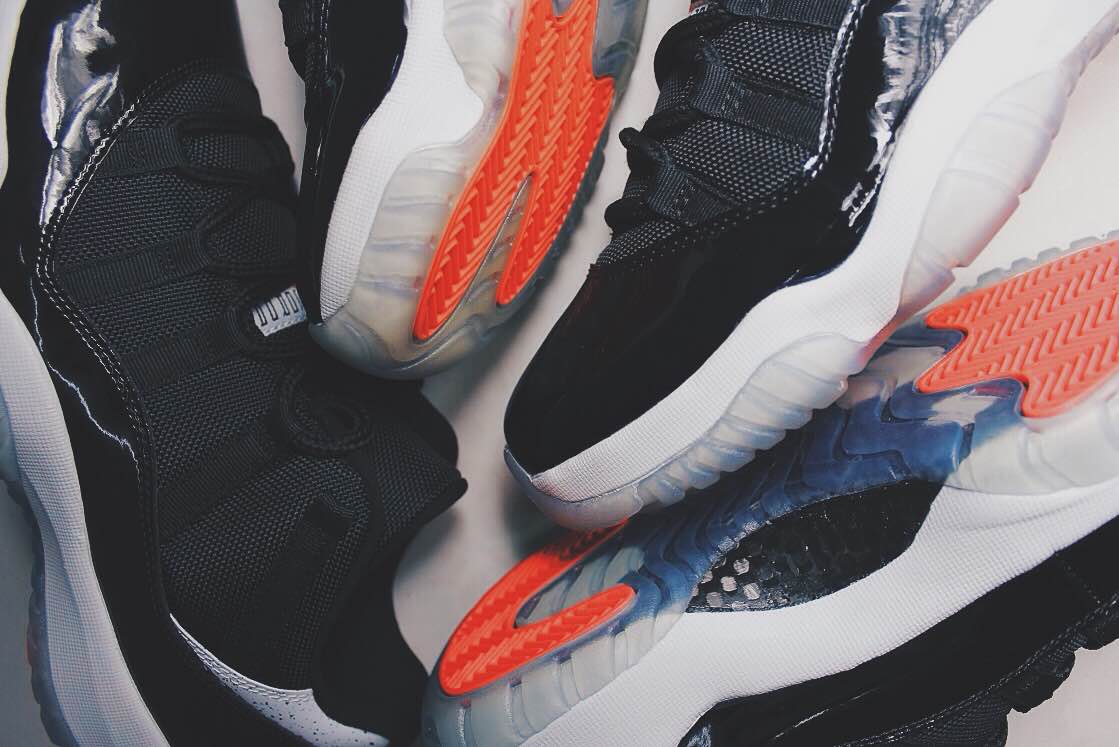
APPEARANCE
I took both pairs out of the box, and from my first initial impression, both looked pretty similar. The materials, the stitching and the shape look pretty similar. A few difference I could see is that the translucent sole on the unauthorized pair is slightly more yellow overall compared to the authentic one, which I would give it a pass since that it is a used pair. Another thing I noticed is the height of the patent leather is slightly higher compared the authentic pair.
The only fault that I could find on the appearance of the pair, which is a pretty obvious one, can be found on the speckles at the back heel of the shoe. The unauthorized pair has less speckles compared to the original one. Also another pretty obvious difference can be found on the mid tongue section where the Jumpman branding is. The unauthorized pair has a slightly thicker font compared to the authentic. Pictures below:-
INNER DETAILS
As for the inside of the shoe, the size tag looks pretty similar, except for the Jumpman logo, which looks just a little bit off. Just a little. The Jumpman logo on the insole is also very similar. Another thing that is pretty different is the numbers that you usually find on the back of the insole. The ones from the unauthorized pair is totally different from the authentic one. The unauthorized pair had too many codes embossed on it and the colour of the sole is also different.
CONCLUSION
All in all, I must admit that if I did not have the authentic with me to do the comparison, it would have been pretty difficult for me to tell the difference. As I mentioned earlier, the materials, stitching and shape of the unauthorized pair was almost identical. Even though the pair was worn, it had the same shoe smell as the brand new authentic pair. If it was a fake pair, I would say that these guys made a very good pair of fake, and on the other hand, I do not have concrete proof that this pair is an unauthorized authentic, or a rejected pair for that matter. The truth is, I do know for sure whether there is such a thing as “unauthorized authentic”, all I know is that if you’re comfortable with buying a pair like this, who am I to judge you. It is your money. And if you’re not comfortable buying something like this, then buy from authorized shops that you trust.
I am also very aware of the fact that a lot of online sneaker sellers are abusing the “Unauthorized Authentic” term to sell their fake shoes, and as I mentioned earlier from my conversations with some of the industry players, some sneaker stores are believe to be mixing these “unauthorized authentic” pairs with their originals. That is why I am not here to promote or condemn these “unauthorized authentic” pairs or anyone who owns them. All I’m here to do is to share the knowledge of what I have learn in hopes that anyone reading this will be more informed and more knowledgeable about what is happening in our scene, and I also hope that the knowledge gained from this post will help them when they want to buy a pair next time so that you can avoid disappointment of being cheated. With that said, here is one last comparison at both the pairs.

